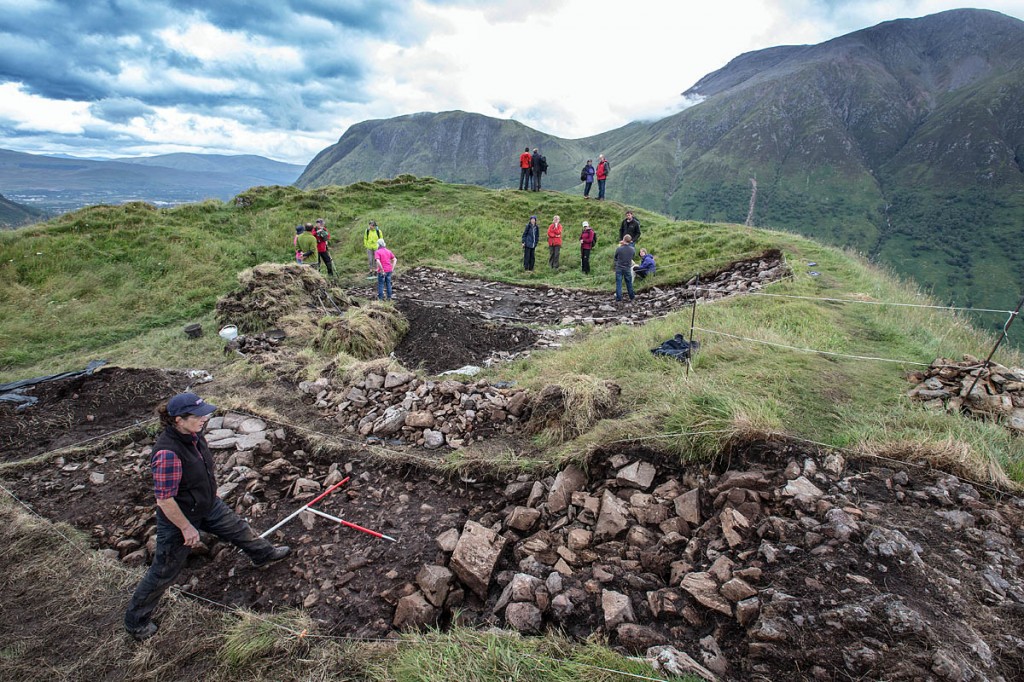Archaeologists will begin probing an Iron Age fortress within sight of Britain’s highest mountain next week.
Dun Deardail, which overlooks Glen Nevis, was the scene of a fire so fierce it melted the rocks in its ramparts.
The mystery surrounding the vitrified fortress, 4km (2½ miles) west of Ben Nevis’s summit, has puzzled archaeologists and historians for decades.
A team will begin a dig on Monday to try to uncover clues as to how and why this fortress was abandoned and set alight by ancient inhabitants of the glen. Archaeologists, field assistants and volunteers will spend a fortnight on at the fort in a project run by the Nevis Landscape Partnership, AOC Archaeology and Forestry Commission Scotland.
The field-crew will build on last year’s archaeological findings which included part of a timber crossbeam from the original structure that experts can carbon-date to reveal, for the first time, when Dun Deardail was occupied and subsequently burned to the ground.
Martin Cook, director and head of fieldwork at AOC Archaeology, said: “It is hugely exciting to be back at Dun Deardail for the second season of the dig.
“This year, as well as excavating across the rampart we will also be digging in the central area of the fort. We hope this will help us establish who was living there and what they were doing. Last year we found evidence of possible structures and activity areas.
“We cannot wait to find out more about these this year.”
The organisations involved will also host the Dun Deardail archaeology festival midway through the archaeological dig on Saturday 20 August at the Braveheart Car Park in Glen Nevis.
The family event is free and organisers said visitors will be able to experience the rich history and heritage of Scotland.
Iron Age guides will demonstrate ancient crafts and cooking and AOC Archaeology will be running a free shuttle bus up to Dun Deardail, high in Glen Nevis.
Matt Ritchie, Forestry Commission Scotland archaeologist and project manager, said: “The one thing we know for sure about Dun Deardail is that it was once destroyed by a blaze so intense that it melted the very rocks of the rampart.
“This project means we can look forward to learning a lot more about this enigmatic site over the next few years. The first year of the excavation was hugely successful, combining volunteer opportunities with exciting new archaeological research.
“Dun Deardail is a great hillfort with an intriguing story to discover. Let us hope this ambitious project can unravel Dun Deardail’s many secrets.”
The Iron Age fort lies a few metres off the route of the West Highland Way, overlooking Glen Nevis and the western flanks of Ben Nevis.
